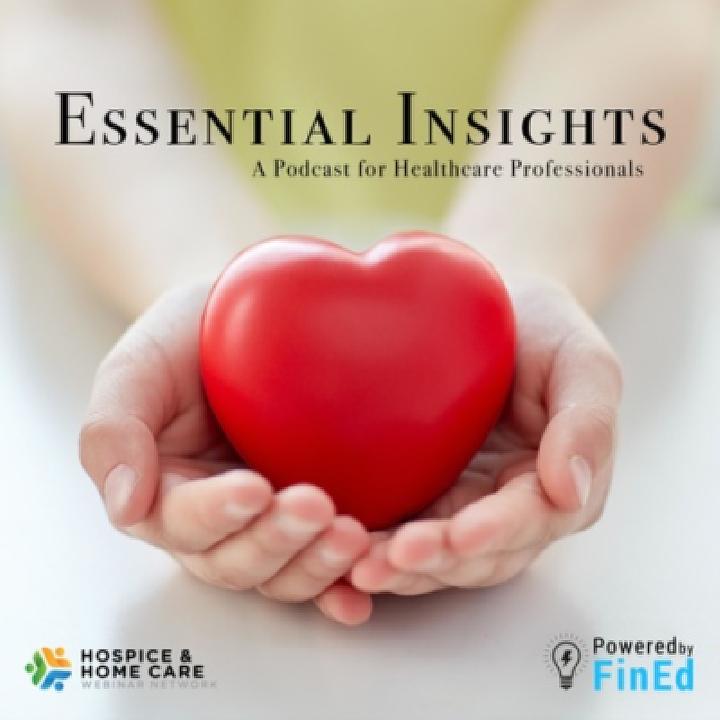
Best Practices When Your CMS Surveyor Comes to Visit
Best Practices When Your CMS Surveyor Comes to Visit
Beginning in 2022, the CMS Survey and Enforcement Requirements went into effect. Getting your hospice ready for these changes is a daunting task. A recent webinar details survey preparation through compliance, continued survey readiness, and performing mock surveys. We are going to break down what a surveyor is looking for, as well as best practices so you can make sure your agency is prepared when they come.
CMS has narrowed the survey focus to an outcome-oriented survey process. The core goal is to gauge the hospice’s performance in relation to its effect on patients’ health and safety. They want to make sure that hospice services contribute to patient services and improved patient outcomes. The survey will evaluate hospice through each of the Conditions of Participation (CoPs) as well as identify hospice’s practices in implementing the requirements. For non-compliant hospice programs, one requirement now establishes enforcement remedies, i.e., sanctions, that may be imposed instead of, or in addition to, termination of participation in the Medicare program.
The surveyor will make observations on areas such as the agency, locations of care, employees, and patients/families/caregivers. When hospices are preparing for their survey, they often overlook the agency itself; for example, making sure their supply rooms are up to standards or the confidentiality measures within the agency. To ensure compliance, the surveyor will watch the employees to see if they follow confidentiality, infection control, regulations, and emergency procedures, to name a few.
When preparing for the survey it is imperative that you have Appendix M – Guidance to Surveyors: Hospice on hand for your staff to review. Surveyors use this as guidance, so it is in your best interest to utilize it to prepare. It clarifies the CoPs, and it gives the intent.
Many agencies know they need to be in compliance with the CoPs, but they don’t know where to begin. The first step will be to ensure that your managers and coordinators read both the CoPs and the interpretive guidelines. They will then need to break down which CoP relates to each employee to ensure they understand the intent of the standard. Once you have this list broken down, it will make it easier to pinpoint where the agency is noncompliant. Then as a group with all staff members, brainstorm and develop a plan to achieve understanding and compliance.
Remaining in compliance needs to be an ongoing, continual process that should happen quarterly or bi-annually to keep the team familiar with regulations and to review compliance with the CoPs. The priority is to drill down on all CoPs/standards in which the hospice is vulnerable to a condition level deficiency or a repeat standard level deficiency. After the pandemic, having these meetings is crucial as many of these guidelines were put to the side.
Now that you know the best practices for how to get and stay in compliance, it’s time to identify if the noncompliance is a standard or condition level deficiency. A standard level deficiency is a noncompliance with one standard or L Tag, whereas a condition level is noncompliant with the entire condition, several standards under a condition, or scope and severity warranted.
Once your team has identified the vulnerabilities for condition or repeat standard level deficiencies, the plan will include staff education to identify why there is noncompliance. You will need to dig deep to learn if it is because the staff doesn’t understand a regulation or perhaps there isn’t a process in place. If so, put a new process in place for staff to ensure everyone is following the same guidelines.
With your agency at risk of losing Medicare certification if the condition is not brought into compliance, this is something you cannot afford to overlook. The condition must be abated within 10 days from the date of the survey, and you cannot wait for the report from the surveying agency to fix the problem. A plan of corrections also must be to the surveying agency with 10 calendar days (not business days). This plan must be detailed and show how the deficiencies were brought into compliance and how they will be sustained.
Now is the time to start planning for your survey. Don’t leave compliance until the last minute, or you may lose your Medicare certification. In Sharon Litwin's latest webinar, Conduct Hospice Mock Surveys In-House Just Like a Surveyor, she covers the best practices in greater detail, delves into the CoPs, and shows you how to conduct mock surveys.
Read These Articles Next
April 13, 2022
May 18, 2022
May 14, 2021
© 2025 FINANCIAL EDUCATION & DEVELOPMENT, INC





